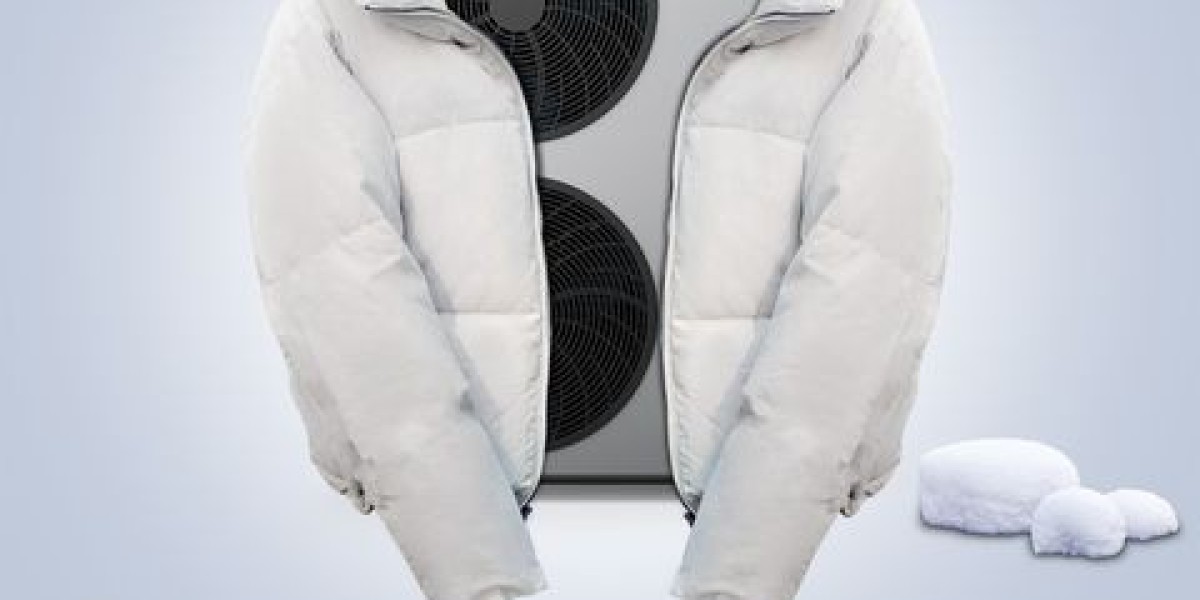As the winter season arrives, with our warm and snug abodes powered by the diligent efforts of our trusty air source heat pumps, we still find ourselves irresistibly drawn to venture outdoors. The allure of snowy landscapes and the exhilaration of winter activities beckon us to embrace the frosty wonderland beyond our cozy walls. However, it is essential to recognize that prolonged exposure to extremely cold temperatures can have severe health consequences. In this article, we will delve into the potential risks and health hazards associated with spending extended periods outdoors in frigid conditions. By understanding these dangers, we can take appropriate precautions to protect ourselves and safeguard our well-being.
Understanding Extreme Cold:
Extreme cold is defined as temperatures far below freezing that are frequently accompanied by sharp winds and low humidity. Long-term exposure to these conditions leads the body to struggle to regulate its internal temperature, which can result in a variety of health issues. Wind chill exacerbates the effects of cold weather by hastening the body's heat loss. Individuals' tolerance to cold is influenced by their degree of physical activity, clothes, age, and overall health.
Hypothermia:
A dangerously low core temperature is symptoms of hypothermia, a potentially fatal condition in which the body loses heat faster than it can generate it. When exposed to extreme cold for an extended amount of time, the risk of hypothermia increases. Shivering, disorientation, and lightheadedness are common early indications and symptoms. Sluggish or shallow breathing, lack of coordination, and even unconsciousness can occur as the disease develops. If left untreated, hypothermia can lead to organ failure and death.
Frostbite:
Frostbite is a risky side effect of prolonged exposure to very low temperatures. It takes place when the tissues underneath the skin freeze due to decreased blood flow.The nose, ears, fingers, and toes are often affected areas. Frostbite may firstly cause the affected area to feel numb, tingling, or stinging. As the situation progresses, blisters may develop and the skin may turn out to be pale or blue. In extreme instances of frostbite when there has been tissue damage, an amputation may be required.
Cardiovascular Risks:
Cold weather can also have a negative influence on cardiovascular health. To maintain core temperature, the body responds to cold by restricting blood arteries in the extremities and diverting blood flow to essential organs. This constriction raises blood pressure and puts additional strain on the heart, potentially leading to heart attacks or other cardiovascular issues, especially in people who already have heart disease.
Respiratory Issues:
The respiratory system can also be adversely affected by extended exposure to extreme cold. Cold air tends to be dry, which can irritate the airways and cause respiratory problems, especially in individuals with pre-existing respiratory conditions such as asthma or chronic obstructive pulmonary disease (COPD). Additionally, breathing in extremely cold air can trigger bronchospasms, leading to shortness of breath and discomfort.
Preventing Cold-Related Health Issues:
While the risks associated with extended outdoor time in extreme cold are significant, it is possible to mitigate these dangers by following essential preventive measures. Here are some guidelines to consider:
Dress Appropriately:
Layering your clothing helps trap warm air and insulate your body effectively. Start with a moisture-wicking base layer that helps keep sweat away from your skin, preventing moisture buildup that can make you feel cold. Add an insulating mid-layer made of materials like fleece or down to provide extra warmth. Finally, don a waterproof and wind-resistant outer layer to protect yourself from harsh elements.
Cover Exposed Skin:
Utilize face masks and goggles to shield your face from freezing temperatures and biting winds. Don't forget to protect your lips with a moisturizing lip balm to prevent them from chapping and becoming susceptible to frostbite.
Stay Hydrated:
It's easy to overlook hydration when you don't feel as thirsty, but the body still needs an adequate amount of fluids. Drink plenty of water and other hydrating beverages to prevent dehydration, which can negatively impact your body's ability to regulate temperature and function optimally.
Plan and Limit Outdoor Exposure:
It's essential to check weather forecasts and plan your outdoor activities accordingly. Keep an eye out for severe weather conditions or high wind chill, as these can significantly increase the risk of cold-related health issues. Minimize your time spent in the extreme cold by seeking shelter or taking breaks in heated areas, such as buildings with air to water heating system.
Keep Moving:
Engaging in light physical activity is another important aspect of staying safe in the cold. By keeping your body moving, you generate heat and improve circulation, which helps to maintain your core temperature. However, it's important to avoid overexertion, as sweating can lead to damp clothing. Dampness increases heat loss from the body, potentially putting you at a higher risk of hypothermia. Strike a balance by engaging in moderate activity that keeps you warm without causing excessive perspiration.
Stay Informed:
Stay updated on any cold weather advisories or warnings issued in your area. This information will help you make informed decisions about outdoor activities and take appropriate precautions. By knowing what to expect, you can adjust your plans accordingly, ensuring that you are adequately prepared for the conditions you may encounter.
Buddy System:
Whenever possible, make it a point to have a companion by your side. This provides an additional layer of safety as you navigate the frosty terrain together. By having a buddy, you can watch out for each other, recognize early signs of cold-related health issues, and offer immediate assistance if needed. In case of an emergency, your companion can help you seek help and ensure your well-being.
Prepare an Emergency Kit:
Carrying a well-stocked emergency kit is a smart precautionary measure. Your kit should include essential items such as extra clothing, blankets, hand warmers, high-energy snacks, and a fully charged mobile phone. These supplies can prove invaluable in unexpected situations. Extra clothing helps you layer up for added warmth, while blankets provide insulation and comfort. Hand warmers can provide instant heat to cold hands, and high-energy snacks replenish your energy levels. A fully charged mobile phone allows you to communicate with emergency services or loved ones if needed. Your emergency kit acts as a lifeline, providing you with essential resources during unexpected circumstances.
Seek Immediate Medical Attention:
Get medical help right away if you or someone you are with exhibits symptoms of hypothermia or frostbite. If left ignored, these cold-related medical issues can quickly get worse and have harmful effects. Timely medical help is essential for a full recovery and to prevent further complications.Do not wait to contact emergency services or go to a hospital to get the care you require. Remember, the earlier you seek medical attention, the better the chances of a positive outcome.
Conclusion:
While winter offers its charm and allure, it is vital to recognize the potential risks associated with extended outdoor time in extreme cold. Hypothermia, frostbite, cardiovascular issues, and respiratory problems are all serious health consequences that can arise from prolonged exposure. By understanding these risks and following preventive measures, we can enjoy the winter season safely and protect our well-being. Remember to dress appropriately, limit exposure, stay hydrated, and stay informed about weather conditions. Stay inside where an air source heating system can provide continual warmth if the weather is genuinely unfavourable, and avoid venturing outside until the bad weather has passed. We can enjoy the beauty of winter while putting our health and safety first by exercising caution and planning.
Zealux, a leading heat pump manufacturer, protects you from coldness by offering the best products and safeguarding your health for a whole year.
Tag: heat pump supplier, pool heater supplier, air to water heat pump manufacturer, pool heater, air to water heat pump system, pool heat pump brands, small pool heater

 heat pump manufacturer
heat pump manufacturer





